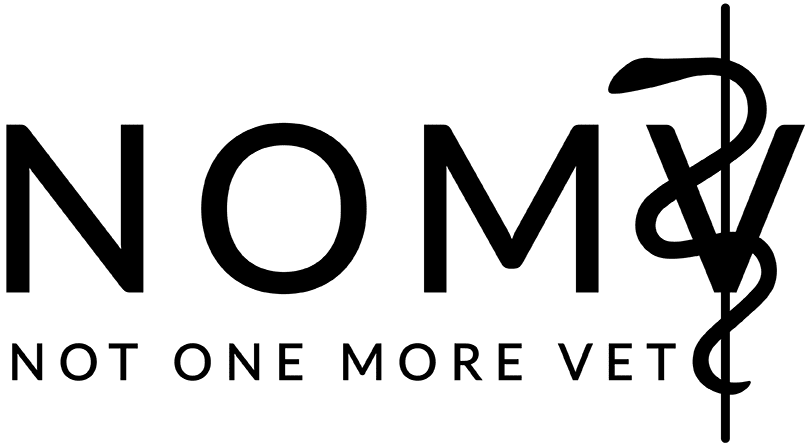Suicide Prevention in Veterinary Professionals: Understanding the Causes and How to Help
By Susie Mitchell, NOMV CLEAR Program Manager
Suicide is a painful reality in the veterinary profession. While veterinarians dedicate their lives to healing animals and supporting families, many quietly carry heavy burdens themselves. Studies have shown that veterinarians are at a higher risk of suicide than the general population, a truth that has shaken the veterinary community and spurred greater attention to mental health (Tomasi, et al., 2019; Silva, et al., 2023; Zimmermann, et al., 2023).
This post explores the causes of suicide in veterinary professionals, what individuals can do to support a struggling colleague, and how proper controlled drug storage plays a crucial role in prevention.

Why Veterinary Professionals Are at Risk
The reasons behind suicide are complex and deeply personal, but certain pressures within the veterinary field contribute to the elevated risk:
- Occupational Stressors: Long hours, emergency responsibilities, and emotional exhaustion take their toll. Compassion fatigue is common when facing constant cases of suffering and euthanasia. (Silva, et al., 2023)
- Financial Strain: Many veterinary professionals graduate with significant student debt and nearly 60% feel dissatisfied with their salaries and financial situations. (Volk, et al., 2024)
- Perfectionism & Personality Traits: Veterinary medicine often attracts high-achievers who hold themselves to exacting standards. Self-criticism and fear of mistakes can amplify distress. (Volk, et al., 2024)
- Stigma Around Mental Health: Despite growing awareness, many professionals hesitate to seek help, fearing judgment or professional repercussions. (Silva, et al., 2023)
- Access to Lethal Means: Unlike many professions, veterinary staff often have access to controlled substances, including barbiturates. This ready availability increases the likelihood that impulsive decisions will result in fatal outcomes. (Silva, et al., 2023)
The Importance of Controlled Drug Storage
While regulatory agencies already require strict storage of controlled drugs, there is an important mental health angle that sometimes gets overlooked: controlled drug storage is suicide prevention.
Why it matters:
Easy access to lethal drugs is one of the strongest predictors of suicide completion. When access is restricted—even briefly—it can interrupt impulsive acts and give someone time to seek or receive help (Hawton, et al., 2024).
Preventative practices for might clinics include:
- Regular inventory audits to quickly identify discrepancies
- Controlling access through use of fingerprint safes, individualized access codes, or designated key holders so that not all team members can obtain drugs without oversight
- Required witnessing for accessing and disposal of drugs to prevent diversion
- Clear policies and training that ensure staff understand not only compliance requirements, but also how drug security protects the entire team’s well-being
This approach reframes drug storage from being solely about regulatory compliance to being about caring for the people who care for animals.
How to Help a Colleague Who May Be Suicidal
Even with safeguards in place, human connection is vital. Every member of the veterinary community has the power to support colleagues who may be struggling. The following strategies, based on the QPR Institute’s suicide prevention training provide tangible steps to help save lives (2019).
Recognizing Warning Signs:
- Withdrawing from colleagues or social activities
- Significant changes in mood or behavior
- Talking about hopelessness, feeling trapped, or being a burden
- Noticeable decline in work performance
Approaching a Conversation:
- Be direct but compassionate: “I’ve noticed you seem overwhelmed lately. How are you doing?”
- Listen without judgment or interruption.
- Avoid minimizing their feelings or rushing to “fix” the situation.
Taking Action:
- Encourage them to seek help through a counselor, employee assistance program, or peer support group.
- Offer to help make the first call or accompany them if appropriate.
- If there is immediate concern for their safety, do not leave them alone—call emergency services or the Suicide & Crisis Lifeline at 988.
Supporting Long-Term:
- Follow up after your initial conversation. A quick check-in can mean a lot.
- Normalize mental health discussions at work.
- Encourage use of wellness resources provided by organizations such as Not One More Vet (NOMV) or the AVMA.
Creating a Supportive Workplace
A workplace culture that acknowledges stress and prioritizes mental health can help reduce the risk of suicide in veterinary professionals and promote thriving veterinary teams. Some steps clinics can take include:
- Committing to creating a mentally healthy workplace through a program like NOMV’s CLEAR Blueprint
- Promoting peer support programs like NOMV’s Lifeboat or VMHS
- Providing staff training on suicide awareness and prevention
- Encouraging open conversations about stress, burnout, and mental health without stigma
- Implementing and strictly following robust drug storage protocols
Small, consistent efforts add up to an environment where colleagues feel seen, supported, and safe.
Suicide in veterinary medicine is a tragedy that impacts individuals, families, and the profession as a whole. The causes are complex, but there are concrete steps we can take—supporting one another, speaking openly about mental health, and maintaining strong safety measures around controlled drugs.
Most importantly, we can remember that no one has to carry these struggles alone. Reaching out to a colleague, locking up medications, or simply offering a listening ear could save a life.
Resources
- Suicide & Crisis Lifeline (U.S.): 988
- List of Suicide & Crisis Lifelines (by Country): Crisis Lines
- Not One More Vet (NOMV): https://www.nomv.org
- AVMA Well-being & Peer Support: https://www.avma.org
Works Cited
Hawton, K., Knipe, D., & Pirkis, J. (2024). Restriction of access to means used for suicide. The Lancet Public Health, 9(10). https://doi.org/10.1016/s2468-2667(24)00157-9
QPR Institute. (2019). QPR Institute | Practical and Proven Suicide Prevention Training. Qprinstitute.com. https://qprinstitute.com/
Silva, C. R. da, Gomes, A. A. D., Santos-Doni, T. R. dos, Antonelli, A. C., Vieira, R. F. da C., & Silva, A. R. S. da. (2023). Suicide in veterinary medicine: A literature review. Veterinary World, 16(6), 1266–1276. https://doi.org/10.14202/vetworld.2023.1266-1276
Tomasi, S. E., Fechter-Leggett, E. D., Edwards, N. T., Reddish, A. D., Crosby, A. E., & Nett, R. J. (2019). Suicide among veterinarians in the United States from 1979 through 2015. Journal of the American Veterinary Medical Association, 254(1), 104–112. https://doi.org/10.2460/javma.254.1.104
Volk, J. O., Ulrich Schimmack, Strand, E. B., Reinhard, A., Hahn, J., Andrews, J., Probyn-Smith, K., & Jones, R. (2024). Merck Animal Health Veterinary Team study reveals factors associated with well-being, burnout, and mental health among nonveterinarian practice team members. Journal of the American Veterinary Medical Association, 1–5. https://doi.org/10.2460/javma.24.03.0225
Zimmermann, C., Strohmaier, S., Niederkrotenthaler, T., Thau, K., & Schernhammer, E. (2023). Suicide mortality among physicians, dentists, veterinarians, and pharmacists as well as other high-skilled occupations in Austria from 1986 through 2020. Psychiatry Research, 323, 115170. https://doi.org/10.1016/j.psychres.2023.115170
Recent Posts
About Us
NOMV addresses well-being in the veterinary medical community through evidence driven programming that raises awareness on mental health in the community while providing innovative prevention and intervention programming.
